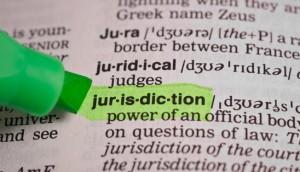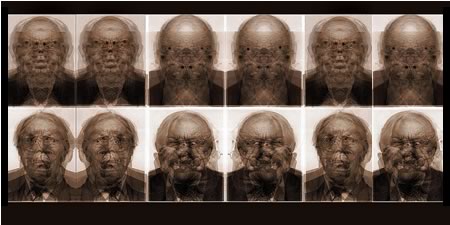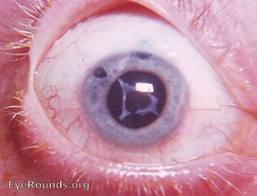How Much is too Much? Counsel’s Active Conduct in Asbestos Suit Results in Forfeiture of Jurisdictional Defense
By Andrew Bullard, Hartford and Cullen Guilmartin, Hartford on June 9, 2016
Since the  U.S. Supreme Court handed down Daimler AG v. Bauman 134 S.Ct. 746 (2014), personal jurisdiction defenses have experienced a renaissance in asbestos litigation. Defendants that wish to win such arguments, however, are well advised to heed a recent ruling by Judge Gibney, who presides over Rhode Island’s state court asbestos docket. In Bazor v. Abex Corporation et al., C.A. No. PC-10-3965 (R.I. Super. May 2, 2016), Judge Gibney issued a ruling that is instructive on what a defendant must do to preserve its right to contest jurisdiction, holding that a defense counsel’s “active conduct constitute[d] forfeiture of the defense of lack of personal jurisdiction.” The court referred to “forfeiture” as opposed to “waiver” because the defendant had properly asserted the lack of personal jurisdiction as a special defense.
U.S. Supreme Court handed down Daimler AG v. Bauman 134 S.Ct. 746 (2014), personal jurisdiction defenses have experienced a renaissance in asbestos litigation. Defendants that wish to win such arguments, however, are well advised to heed a recent ruling by Judge Gibney, who presides over Rhode Island’s state court asbestos docket. In Bazor v. Abex Corporation et al., C.A. No. PC-10-3965 (R.I. Super. May 2, 2016), Judge Gibney issued a ruling that is instructive on what a defendant must do to preserve its right to contest jurisdiction, holding that a defense counsel’s “active conduct constitute[d] forfeiture of the defense of lack of personal jurisdiction.” The court referred to “forfeiture” as opposed to “waiver” because the defendant had properly asserted the lack of personal jurisdiction as a special defense.
In this instance, the “active participation” included the following conduct during the two years and nine months between the filing of an answer and the motion to dismiss: filing an objection to the trial date, attending a plaintiff’s deposition, requesting and participating in the reopening of that deposition, participating in the deposition of the plaintiffs’ expert, objecting to the expert’s deposition on non-jurisdictional grounds, disclosing eight expert witnesses, filing 15 motions in limine, supplementing its expert witness disclosure, producing two expert witnesses for depositions, responding to discovery (without preserving the defense of lack of personal jurisdiction), supplementing its expert discovery, moving to compel the production of the plaintiffs’ bankruptcy trust documents, and participating in at least ten status/settlement conferences. In short, defense counsel’s very active participation in the litigation was so active so as to constitute “forfeiture” of a claim of lack of personal jurisdiction.
Looking to federal jurisprudence for guidance, the court focused on defense counsel’s litany of activity over several years. Synthesizing federal decisions, the court identified two principal elements to weigh to determine whether a defense of personal jurisdiction is forfeited: (a) the delay in asserting the defense; and (b) the “nature and extent” of the defendant’s involvement in the case. The court noted that the first factor could be met by as little as four months’ delay; but reasoned that the second factor weighed more heavily than the mere passage of time. With regard to the second factor, the court cited defendant’s filing of an appearance, participation in discovery, attending and taking depositions, and filing and opposing motions as evidence of active participation. Notably, the court found that the defendant had created “substantial delay” without “a sufficiently meritorious reason” for failing to assert its defense for two years and nine months after the filing of its answer. The level of participation appears to have been the deciding factor; with special attention brought to “the fifteen motions in limine [defendant] filed which sought merits-based rulings” and the failure to continually assert the defense throughout the course of litigation. However, of concern is that the ruling did nothing to establish a “bright line” rule of precisely how much participation is “too much” so as to result in a forfeiture of a jurisdictional defense.
It is unclear where this decision leaves litigants who need to participate in early discovery and who also want to preserve their jurisdictional defenses. Defendants who wish to maintain their defenses are faced with choosing from various interpretations of the Bazor decision, focusing on the assertion of their rights and carefully monitoring the level of their participation. The decision could reasonably be read to indicate that a party may participate in discovery, but only if they continue to maintain and pursue their jurisdictional defense. Alternatively, some parties may refuse to participate in non-jurisdictional discovery for fear of inadvertent forfeiture. This may create friction with plaintiff’s counsel when their clients are in poor health, which frequently occurs in asbestos cases across the country. Ultimately, the lesson of Bazor may be that safest resolution for defense counsel will be to file and pursue dispositive jurisdictional motions as early in the case as possible. At the very least, defense counsel should raise the defense in pleadings and discovery which precede the filing of the motion to dismiss on jurisdictional grounds and/or reach some sort of agreement with opposing counsel to prevent forfeiture despite some level of active participation in the case. For example, defense counsel in the asbestos litigation should obtain a stipulation that attendance at an exigent deposition does not constitute a waiver of personal jurisdiction arguments; and that stipulation should be placed on the record.

 No matter how conscientious, environmental lawyers, like other attorneys, are regularly sued for legal malpractice. It is not difficult to imagine some of the dicey situations where the environmental practitioner may fall prey to such claims:
No matter how conscientious, environmental lawyers, like other attorneys, are regularly sued for legal malpractice. It is not difficult to imagine some of the dicey situations where the environmental practitioner may fall prey to such claims: contract and tort claims can have significant ramifications for the contracting parties if the business relationship falls apart and litigation results. Under New York law, how the parties negotiate the allocation of risk of loss is enormously important.
contract and tort claims can have significant ramifications for the contracting parties if the business relationship falls apart and litigation results. Under New York law, how the parties negotiate the allocation of risk of loss is enormously important. applying advanced neuroscientific techniques to pretrial discovery and trial.
applying advanced neuroscientific techniques to pretrial discovery and trial. the new bible of advocacy. The Seattle Zen Legal Blog authored by plaintiff lawyer
the new bible of advocacy. The Seattle Zen Legal Blog authored by plaintiff lawyer  Graham & Laney PA in Columbia, South Carolina, provides an in-depth discussion of new trial strategy in “
Graham & Laney PA in Columbia, South Carolina, provides an in-depth discussion of new trial strategy in “ make a judgment based on that virtual reality. Ball and Keene provide advice to their readers on how to circumvent this evidentiary rule. ”
make a judgment based on that virtual reality. Ball and Keene provide advice to their readers on how to circumvent this evidentiary rule. ” flashlight of attention which can refigure the brain and change behavior.”
flashlight of attention which can refigure the brain and change behavior.” When the preemption defense is not available, it may still be possible to effectively dismiss a plaintiff’s claim by arguing that the court should consider primary jurisdiction. Primary jurisdiction is a judicially created doctrine that addresses the proper relationship between court and administrative agencies.
When the preemption defense is not available, it may still be possible to effectively dismiss a plaintiff’s claim by arguing that the court should consider primary jurisdiction. Primary jurisdiction is a judicially created doctrine that addresses the proper relationship between court and administrative agencies. 
 Call me old fashioned, but I am uncomfortable with the growing industry involving third-party financing of commercial claims in litigation. In the not-too-distant future, it may well be that commercial litigations will be “bundled” and traded as securities on financial exchanges, not unlike the exchanges that
Call me old fashioned, but I am uncomfortable with the growing industry involving third-party financing of commercial claims in litigation. In the not-too-distant future, it may well be that commercial litigations will be “bundled” and traded as securities on financial exchanges, not unlike the exchanges that  including champerty and maintenance; the duty of confidentiality and the related attorney-client privilege; and litigation counsel’s duties of loyalty and independence.
including champerty and maintenance; the duty of confidentiality and the related attorney-client privilege; and litigation counsel’s duties of loyalty and independence. One previously Triple-A rated commercial litigation was recently downgraded and assigned a “junk” rating.
One previously Triple-A rated commercial litigation was recently downgraded and assigned a “junk” rating.  There is significant tension between the goals of scientific research and the demands of litigation. For scientific researchers, the amount of time required to respond to discovery takes away valuable time that might be otherwise devoted to research. Injustice and unfairness may result when a scientist, who has taken no part in a litigation, is served with a lengthy subpoena requiring him to devote large chunks of time to produce the required information.
There is significant tension between the goals of scientific research and the demands of litigation. For scientific researchers, the amount of time required to respond to discovery takes away valuable time that might be otherwise devoted to research. Injustice and unfairness may result when a scientist, who has taken no part in a litigation, is served with a lengthy subpoena requiring him to devote large chunks of time to produce the required information. 
 In determining that the studies and related documents should be subject to in camera scrutiny, the Court stated that the trial court was rightfully wary of prejudicing plaintiffs by permitting the sudden introduction of the studies or experts on the eve of trial, or in the many other pending asbestos cases. Therefore, the principles of fairness, as well as the spirit of the Case Management Order, required more complete disclosure. The Court held that it would be inappropriate to permit Georgia-Pacific to use its expert’s conclusions as a sword by seeding the scientific literature with Georgia-Pacific-funded studies, while at the same time using the privilege as a shield, by withholding the underlying raw data that might be prone to scrutiny by the opposing party which may affect the veracity of its expert’s conclusions. In its in camera review, the court will evaluate whether the crime-fraud exception to the attorney-client privilege applies to certain of the client communications in dispute.
In determining that the studies and related documents should be subject to in camera scrutiny, the Court stated that the trial court was rightfully wary of prejudicing plaintiffs by permitting the sudden introduction of the studies or experts on the eve of trial, or in the many other pending asbestos cases. Therefore, the principles of fairness, as well as the spirit of the Case Management Order, required more complete disclosure. The Court held that it would be inappropriate to permit Georgia-Pacific to use its expert’s conclusions as a sword by seeding the scientific literature with Georgia-Pacific-funded studies, while at the same time using the privilege as a shield, by withholding the underlying raw data that might be prone to scrutiny by the opposing party which may affect the veracity of its expert’s conclusions. In its in camera review, the court will evaluate whether the crime-fraud exception to the attorney-client privilege applies to certain of the client communications in dispute.  Yesterday, we published an article titled
Yesterday, we published an article titled  In an earlier article, we discussed the danger posed to an impartial jury system by the “
In an earlier article, we discussed the danger posed to an impartial jury system by the “ machine was used to assist in the removal of the lens with the cataract.
machine was used to assist in the removal of the lens with the cataract.